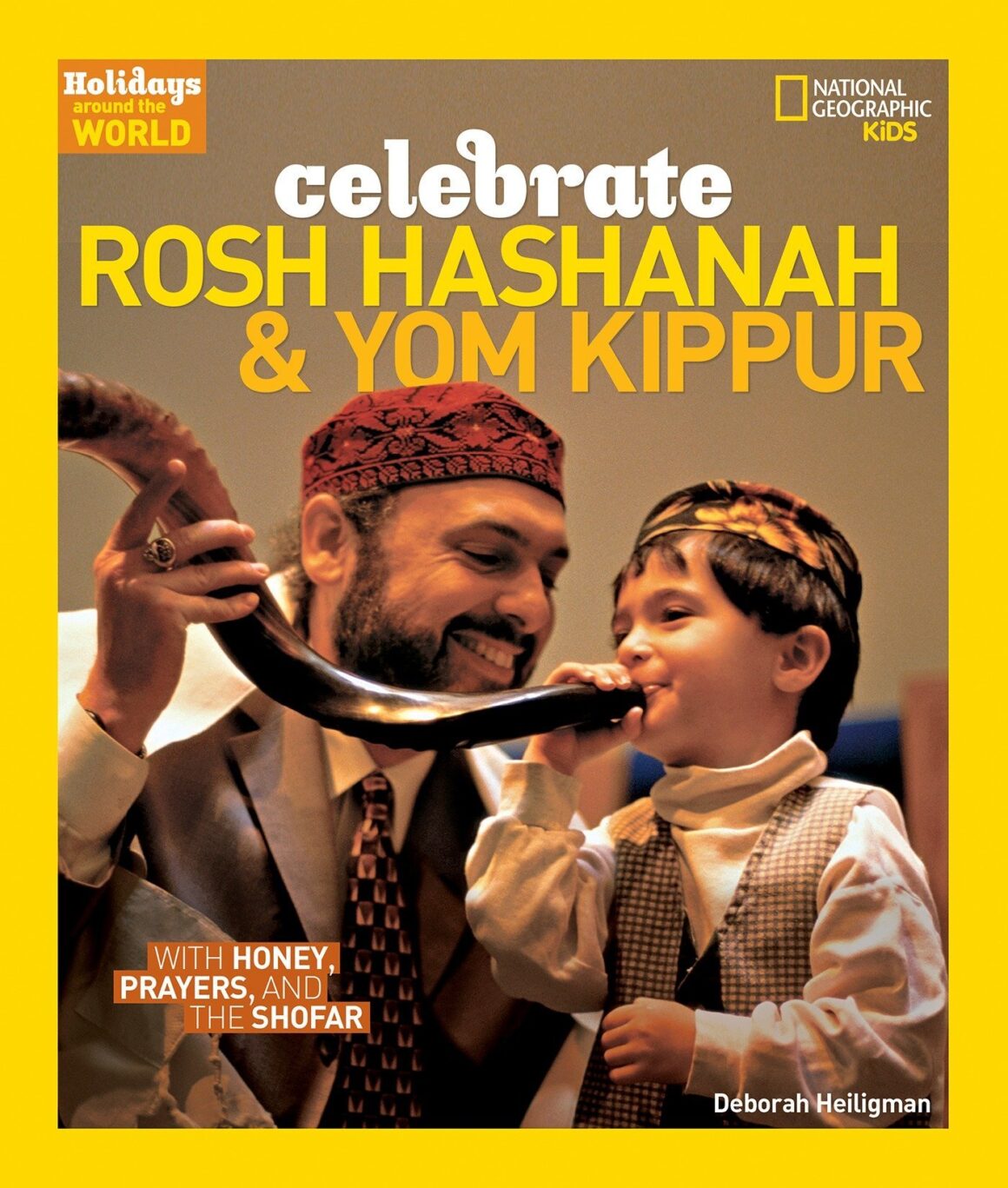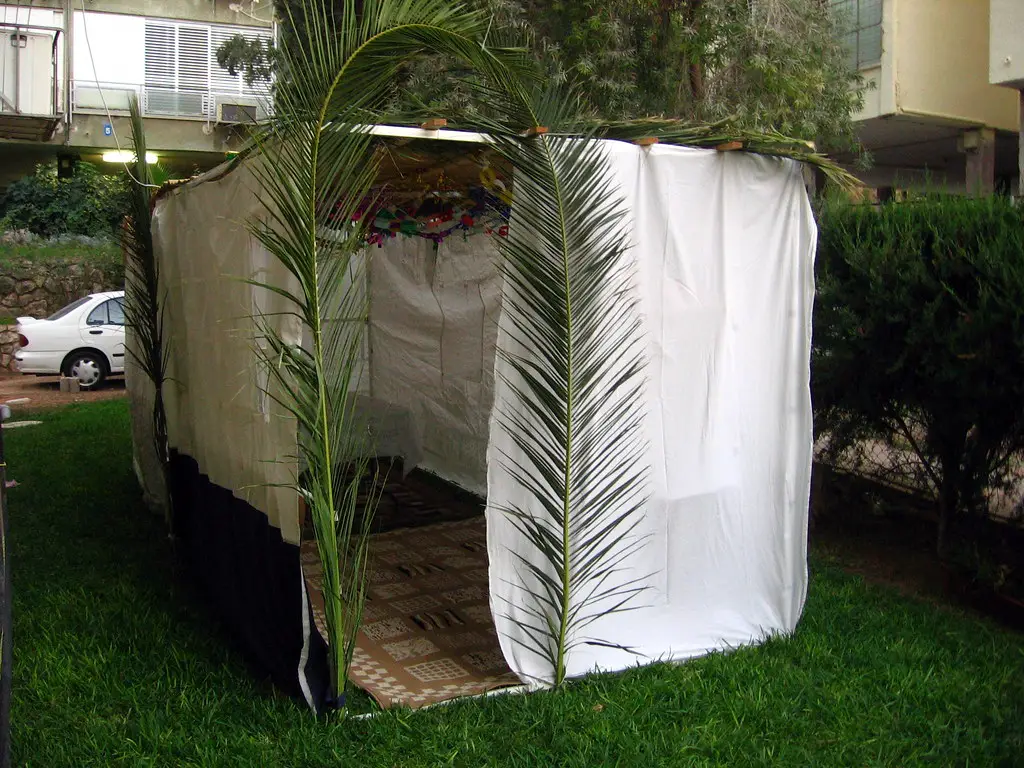The Jewish High Holidays are beginning in less than a week. Many Jewish children will be taking days off from school to celebrate and many school districts throughout the country will close for a few days to accommodate Jewish teachers and students. Your child, whether you celebrate these holidays or not, may wonder what they are all about. The best place to turn for answers—as always—is books!
The High Holidays – Really 4 Holidays
The Jewish New Year, Rosh Hashanah, comes first and for many is celebrated over two days. A week later is Yom Kippur, the day of atonement. These two holidays are closely related and constitute what people generally think of as ‘the high holidays.’

However, the third holiday of Sukkot begins four days later. That holiday lasts for seven days, immediately followed by the last of the four holidays, Simchat Torah. That’s a lot of celebrating!
First – For Adults
To start unraveling the meanings of the holidays and their associated rituals, we can start with a book intended for adult readers. The Newish Jewish Encyclopedia provides short but straightforward summaries of each of these days. There are a few paragraphs explaining the reason for each holiday, followed by “What Do We Eat?,” “What Do We Do?,” or “Any Dos and Don’ts.” Readers won’t find “What Do We Eat?” in the listing for Yom Kippur because it’s a fast day.
Next – For the Kids
For a similar collection of brief explanations aimed at young readers, Leslie Kimmelman’s Dance, Sing, Remember is a good choice. The child-appropriate explanations are accompanied by Ora Eitan’s artistic illustrations. This book not only takes note of special foods that accompany the holidays but also provides easy-to-follow recipes with the caution that a grown-up helper is needed.

Rosh Hashana and Yom Kippur are the best known of the four holidays and have generated the greatest number of children’s books on the subject. Deborah Heiligman’s Celebrate Rosh Hashanah & Yom Kippur are part of National Geographic’s Holidays Around the World Series. This small volume aimed at pre or early readers is illustrated with photographs of a family carrying out the celebrations and provides explanations of many of the rituals involved as well as the special significance of traditional holiday foods. The back of the book includes a few pages for adults giving deeper explanations, a recipe for traditional honey cake, and a bibliography for those seeking more information.
For slightly older independent readers, Rosh Hashanah by Ann Heinrichs is a good choice providing fuller explanations of the customs. A different take on the New Year’s holiday can be found in Allison Ofanansky’s What’s the Buzz? Since honey is very much a part of the traditional celebrations, this author has combined vivid photographs with explanations of how honey is produced and harvested. And, for the youngest set more interested in board books or very limited text, there are many good choices, including Rosh Hashanah and Yom Kippur by David F. Marx and One, Two, Three Rosh Hashanah! by Naomi Shulman.
Tell Me a Story
Young readers and older readers if we are honest often prefer gathering information in the framework of a fun story rather than through straight facts. Chris Barash explains Rosh Hashanah through a classic friendship story in his Jackie and Jesse and Joni and Jae. Jacqueline Jules tackles both a child’s distress over a recent move and the stress of the holidays in What a Way to Start a New Year. Sibling conflict carries April Halprin Wayland’s New Year at the Pier into a Rosh Hashanah story that explores both the holiday and family relationships in one fun-to-read adventure.
Holidays and More Holidays
The remaining holidays that constitute this period are a little less known and less frequently covered in children’s books. But that does not mean there are still not excellent choices for sharing and explaining the holidays and their customs to children. Sukkot commemorates the events told of the Jewish people being freed from slavery in Egypt and sent to wander in the desert for many years before being resettled. During this time of movement through the desert, the people lived in temporary structures called sukkahs. The holiday is celebrated by Jewish families building sukkahs in their backyards, on their balconies, or wherever they can. During the seven days of the holiday, many families have meals in their sukkah and some even sleep in them. What a great setting for a children’s story!
Related: 6 Book-Related Holidays You Can Celebrate at Your Local Bookshop
This time, looking at the youngest of the readers first, Chris Barash’s Is It Sukkot Yet? depicts a family building a sukkah using sparse rhyming text and brightly colored illustrations. In addition to showing the extended family helping with all aspects of preparations for the holidays, the book also captures the feeling of fall that accompanies this holiday’s occurrence. Since the holiday also includes a celebration of the fall harvest, there are interesting fruits and other plants involved in the traditions, which are highlighted in this volume.

Jane Kohuth’s Who’s Got the Etrog? focuses on an unusual citrus fruit, called an etrog, which plays a large role in the Sukkot celebrations. But for an explanation of the holiday wrapped in a fun story, try Bubbe Isabella and the Sukkot Cake by Kelly Terwilliger. A second great choice that spins a different version of a well-known folktale is Leslie Kimmelman’s The Very Crowded Sukkah. This tale is a riff on the “It Could Always Be Worse” stories. In this version, the family is driven indoors by a sudden rainstorm. Then, the neighborhood animals take over. Lady bugs, butterflies, ants, and rabbits move in to enjoy both the shelter and some abandoned snacks. After the storm, the family again inhabits the sukkah. But not for long! After dark, as the family sleeps, it is visited by deer, squirrels, raccoons, turtles, and even a lizard and a caterpillar.
The final holiday in the series, Simchat Torah, celebrates the beginning of a new cycle of reading the Torah, sometimes called the Old Testament. An excellent choice for learning about this holiday comes from Sylvia Rouss’s Sammy the Spider series. In Sammy Spider’s First Simchat Torah, this familiar character for many children highlights the flags and parades that are part of this holiday’s traditions.
These are just some of the many choices that children of all ages can use to learn about their own traditions or that of their neighbors!
